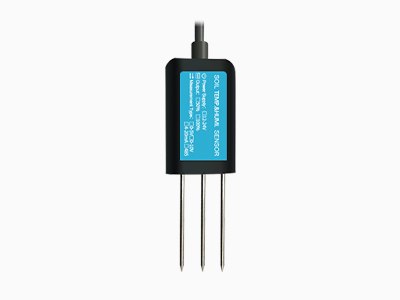In recent years, soil moisture sensors have become a reliable tool for assessing soil moisture content in a variety of agricultural applications. Soil moisture plays a crucial role in agriculture and plant growth. Farmers and researchers around the world are constantly seeking innovative methods to monitor and manage soil moisture levels effectively.This article aims to explore the significance of soil moisture sensors and their role in optimizing crop growth.

Introduction to Soil Moisture Sensors
Soil moisture sensors are devices designed to measure the amount of water content in the soil. These sensors employ different technologies such as time-domain reflectometry (TDR), capacitance, or electrical resistance to determine soil moisture levels. The sensors are typically inserted into the ground at various depths to measure moisture content at different soil layers.
Understanding Soil Moisture Importance
Soil moisture is vital for plant growth as it directly affects nutrient availability, root development, and overall crop productivity. Insufficient or excessive soil moisture can hinder plant growth and lead to yield losses. Therefore, accurate monitoring and management of soil moisture levels are essential for sustainable agriculture.
Advantages of Soil Moisture Sensors

Soil moisture sesnsors offer several advantages compared to traditional methods of soil moisture monitoring. Firstly, they provide real-time data, allowing farmers to make immediate irrigation decisions based on accurate information. This helps prevent overwatering or underwatering, which can reduce water waste and optimize water usage efficiency. Secondly, soil moisture detectors enable farmers to determine optimal irrigation scheduling, ensuring that crops receive adequate water when needed. This promotes healthier plant growth and can result in higher crop yields. Lastly, these sensors can be easily connected to automated irrigation systems, enabling automated and precise irrigation control.
Application in Precision Agriculture
Precision agriculture relies heavily on data-driven decision-making for optimal crop management. Soil moisture sensor play a vital role in precision agriculture by providing valuable information on soil moisture levels. By deploying these sensors across fields, farmers can create a detailed soil moisture map, allowing them to identify areas with excessive or inadequate moisture. This data enables targeted irrigation and fertilization strategies, reducing unnecessary resource use and minimizing environmental impacts.
Research and Field Trials
Researchers have conducted extensive studies and field trials to assess the effectiveness of soil moisture sensor. These trials have demonstrated the positive impact of sensor-based irrigation management on crop yields and water savings. The data collected from soil moisture sensor helps researchers gain insights into crop water requirements, soil characteristics, and the impact of irrigation practices on plant health.
Potential Challenges and Future Developments
Despite their benefits, soil moisture sensor face certain challenges. One challenge is the need for regular calibration to ensure accurate readings, as soil types and conditions can vary. Additionally, the cost of sensors and installation may pose financial constraints for some farmers. However, ongoing advancements in sensor technology are addressing these challenges, with improved accuracy, affordability, and ease of use.
Conclusion:
Soil moisture sensor have revolutionized the way farmers monitor and manage soil moisture levels, leading to more efficient water usage, improved crop yields, and sustainable agriculture practices. By using these sensors, farmers can make informed decisions about irrigation timing and quantity, resulting in optimal crop growth. Continued research and development in this field will further enhance the capabilities of soil moisture sensor, empowering farmers worldwide to make data-driven decisions and achieve agricultural sustainability.
